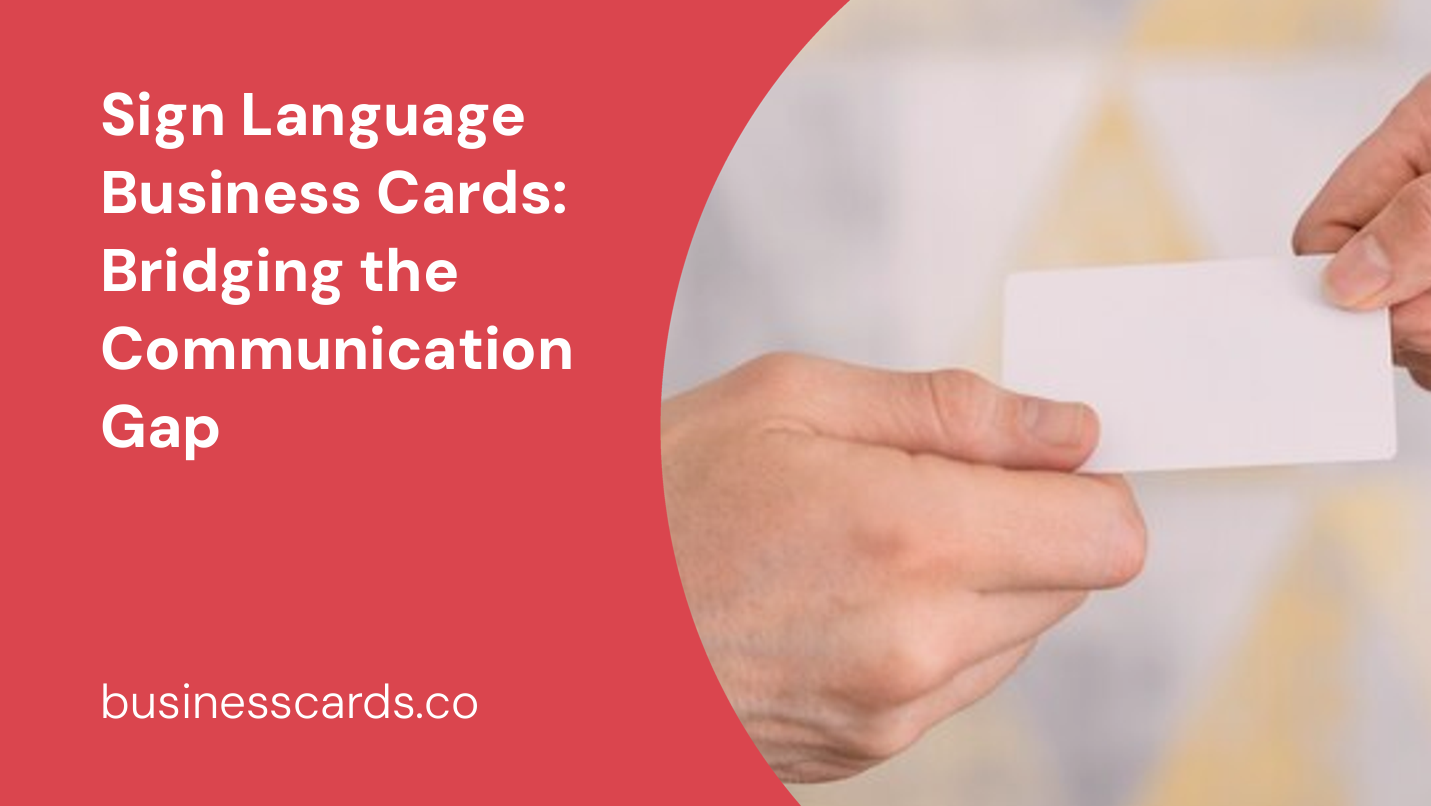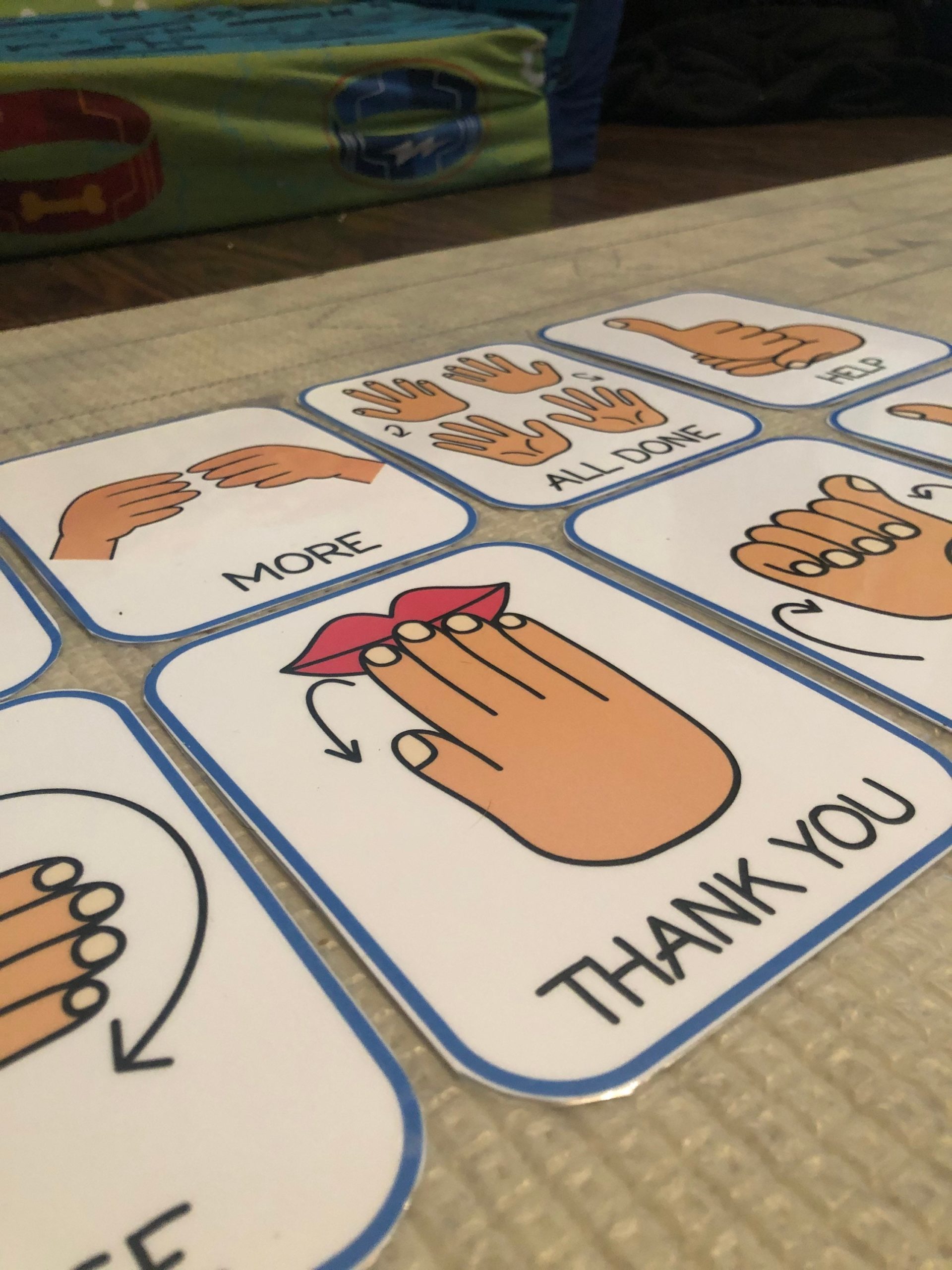
Have you ever considered the power of effective communication in business? In our increasingly diverse world, it is crucial to be inclusive and make everyone feel valued. One way to achieve this is by utilizing sign language business cards. These unique tools bridge the communication gap between individuals who are deaf or hard of hearing and those who are not.
Why Sign Language Business Cards Matter

In a society that heavily relies on spoken language, individuals who are deaf or hard of hearing often face challenges when it comes to understanding and engaging in conversations. Traditional business cards can reinforce this barrier, as they typically only contain written information. However, sign language business cards offer a solution to this problem by incorporating both written text and sign language visuals.
Enhancing Accessibility and Inclusion
Sign language business cards create a more inclusive experience for individuals with hearing impairments. By including sign language visuals, these cards enable deaf or hard of hearing individuals to understand the information being shared quickly and easily. This ensures that they feel included and valued, fostering a more inclusive work environment.
Breaking Down Barriers
Business cards are often exchanged at networking events, conferences, and other professional gatherings. By utilizing sign language business cards, you are breaking down communication barriers and making it easier for individuals who are deaf or hard of hearing to engage in conversations. This can lead to more meaningful connections and opportunities for collaboration.
How to Create Effective Sign Language Business Cards

Creating sign language business cards may seem like a daunting task, but it doesn’t have to be. By following a few simple steps, you can design cards that effectively communicate with individuals who are deaf or hard of hearing.
Step 1: Choose the Right Sign Language
Sign language varies depending on the country or region. Before creating sign language business cards, research the appropriate sign language for your target audience. For example, American Sign Language (ASL) is commonly used in North America, while British Sign Language (BSL) is predominant in the United Kingdom.
Step 2: Incorporate Sign Language Visuals
Once you have identified the appropriate sign language, it is time to incorporate the visuals into your business card design. This can be done by including simple illustrations or diagrams demonstrating common phrases or concepts. Make sure the visuals are clear and easy to understand.
Step 3: Combine Text and Visuals
To create a seamless experience, ensure that your sign language business cards contain both written text and sign language visuals. Include essential information such as your name, job title, contact details, and any other relevant details. Place the text and visuals strategically on the card to maintain a clean and professional design.
Step 4: Seek Feedback
Before finalizing your sign language business cards, seek feedback from individuals who are deaf or hard of hearing. This will help you ensure that the design and content effectively communicate the intended message. Incorporating feedback from the target audience is key to creating an inclusive and user-friendly card.
The Benefits of Sign Language Business Cards
Promoting Inclusivity and Respect
By incorporating sign language visuals into your business cards, you are sending a powerful message of inclusivity and respect for individuals who are deaf or hard of hearing. This showcases your commitment to equal opportunities and creating an environment of understanding and acceptance.
Making a Lasting Impression
In the competitive world of business, it is essential to differentiate yourself from the competition. Sign language business cards offer a unique and memorable way to make a lasting impression. When networking or collaborating with individuals who are deaf or hard of hearing, your effort to communicate effectively will leave a positive impact.
Expanding Your Network
Sign language business cards open doors to potential collaborations and partnerships with individuals who are deaf or hard of hearing. By engaging in effective communication, you are more likely to build meaningful connections and expand your professional network. These connections can lead to new opportunities and a broader reach for your business.
In Conclusion

Sign language business cards are powerful tools that bridge the communication gap between individuals who are deaf or hard of hearing and those who are not. By incorporating sign language visuals into your business card design, you are promoting inclusivity, breaking down communication barriers, and making a lasting impression. Remember, effective communication is the foundation of successful relationships in the business world. So, why not leverage the power of sign language business cards to enhance your professional interactions and embrace diversity?
Ava Taylor’s passion for branding and marketing shines through in her dynamic writing. She brings a unique perspective with her background in event planning, infusing creativity into her content. When she’s not writing, Ava enjoys organizing community events and gatherings.